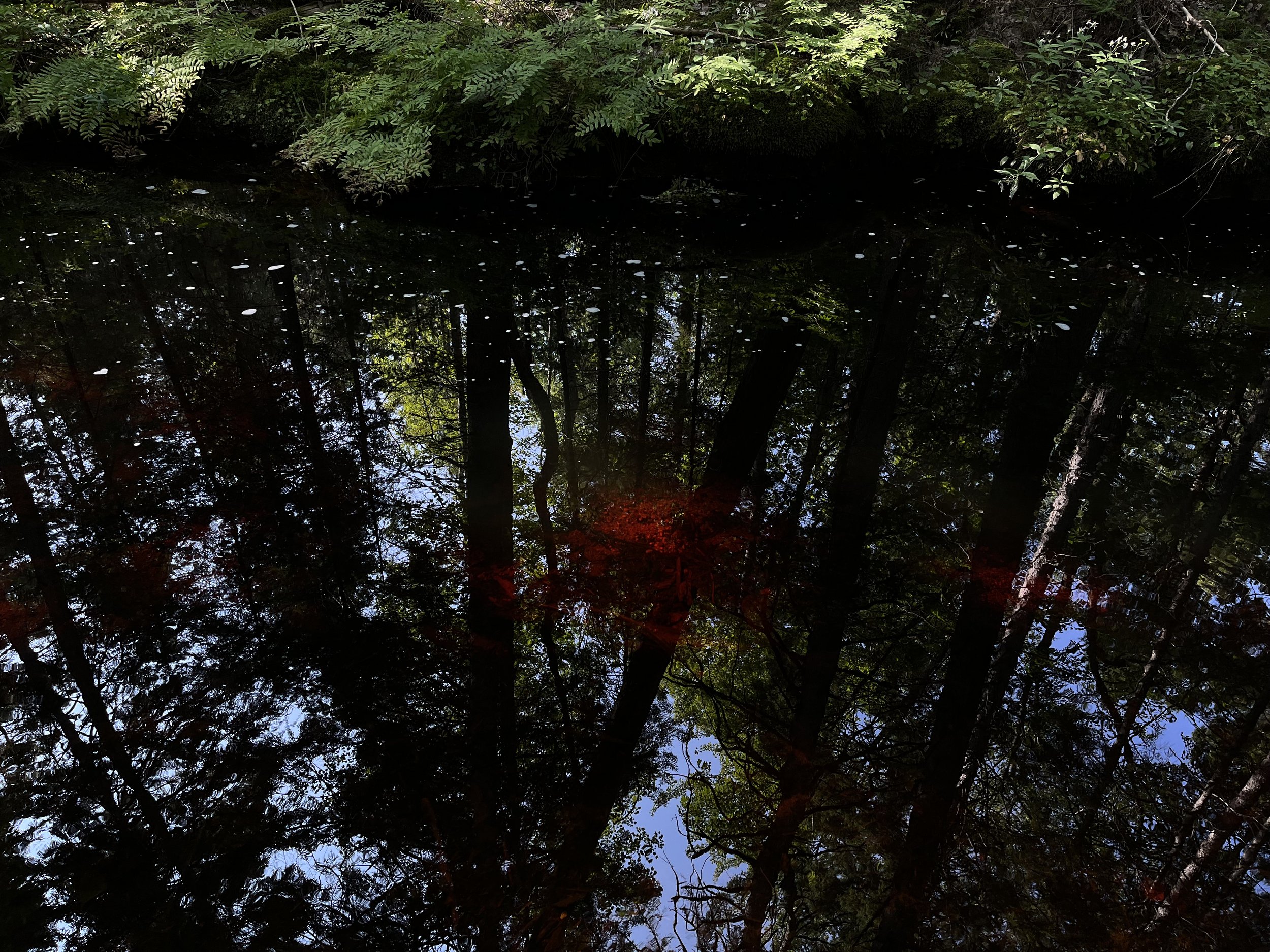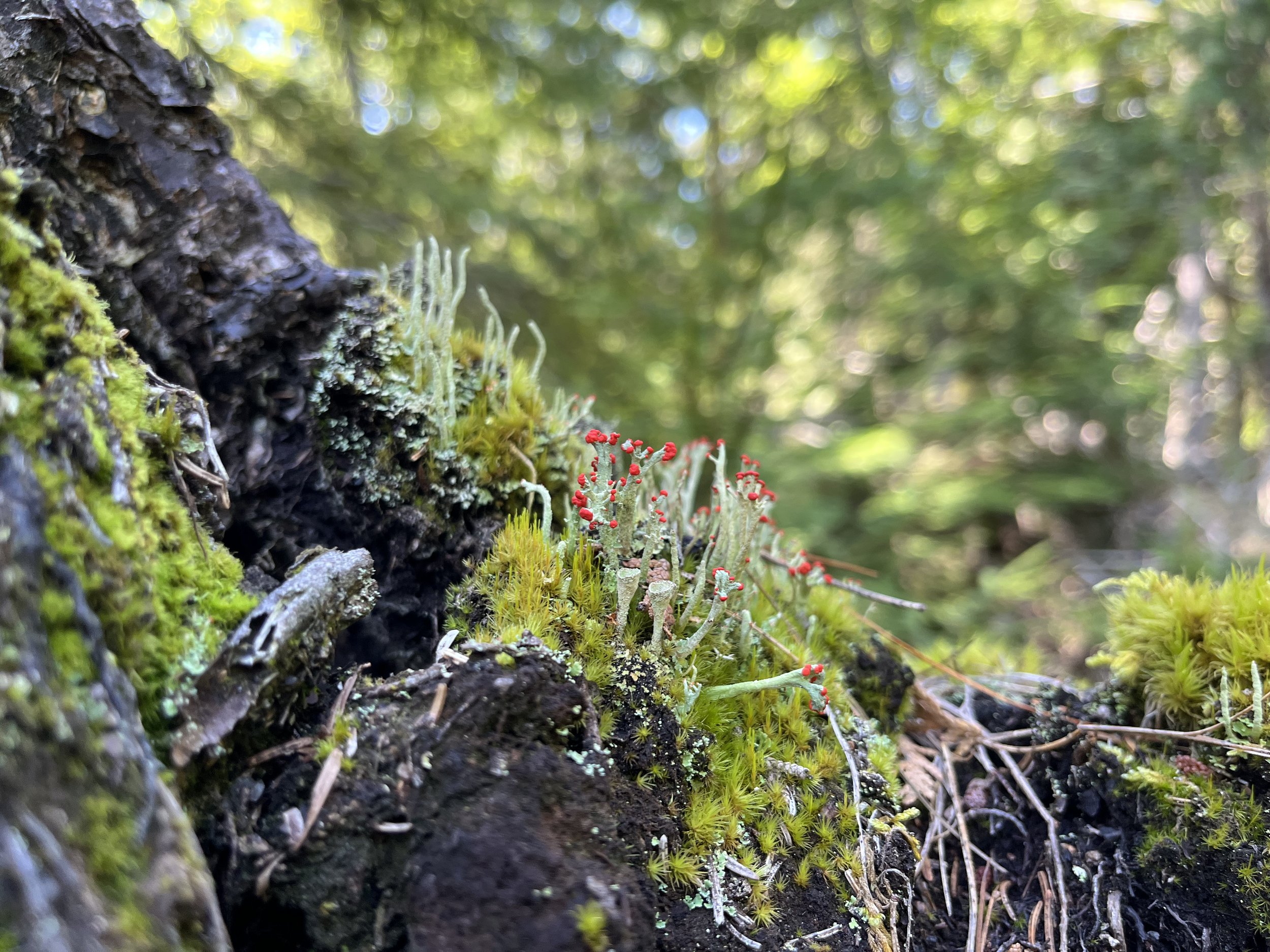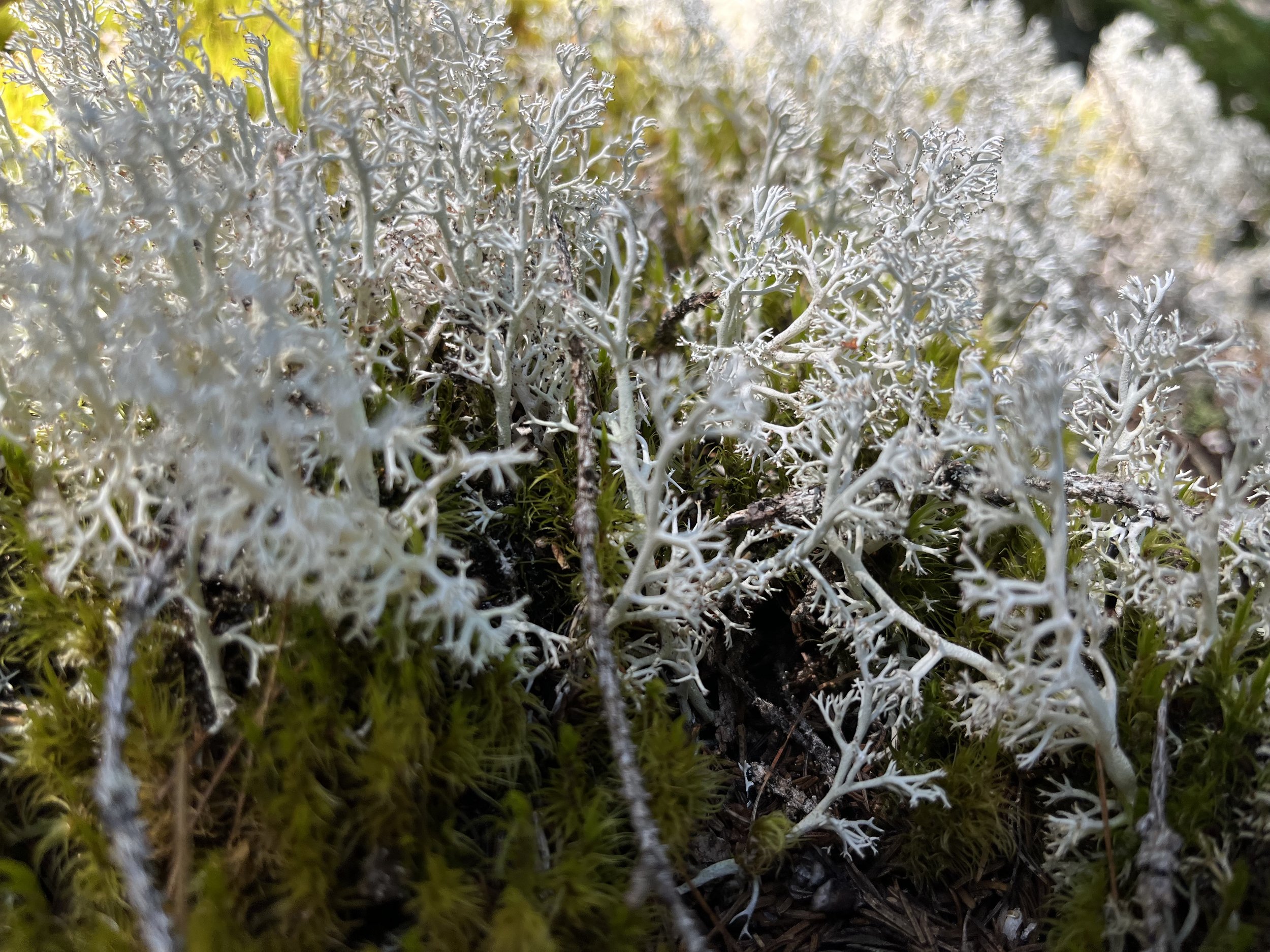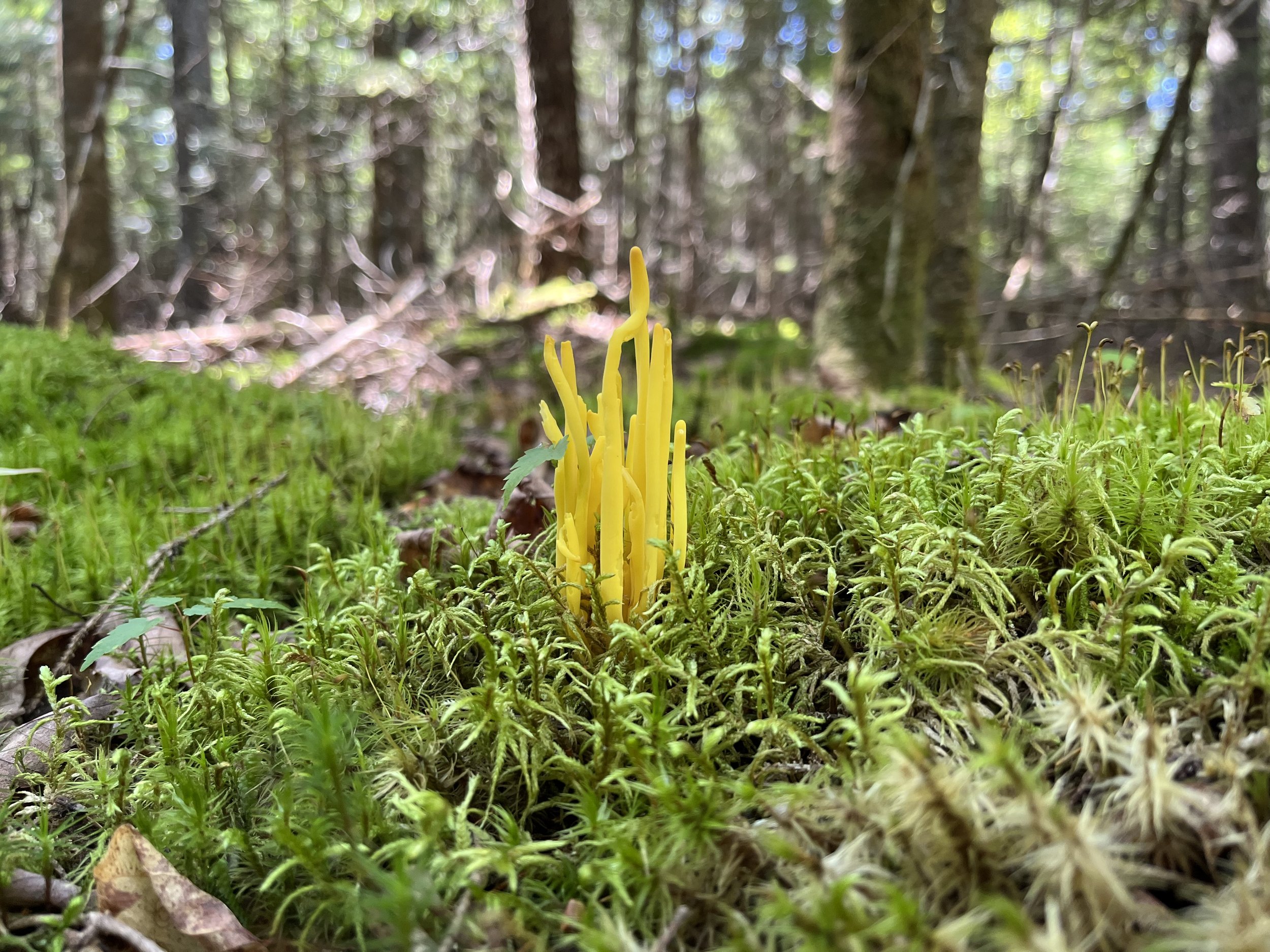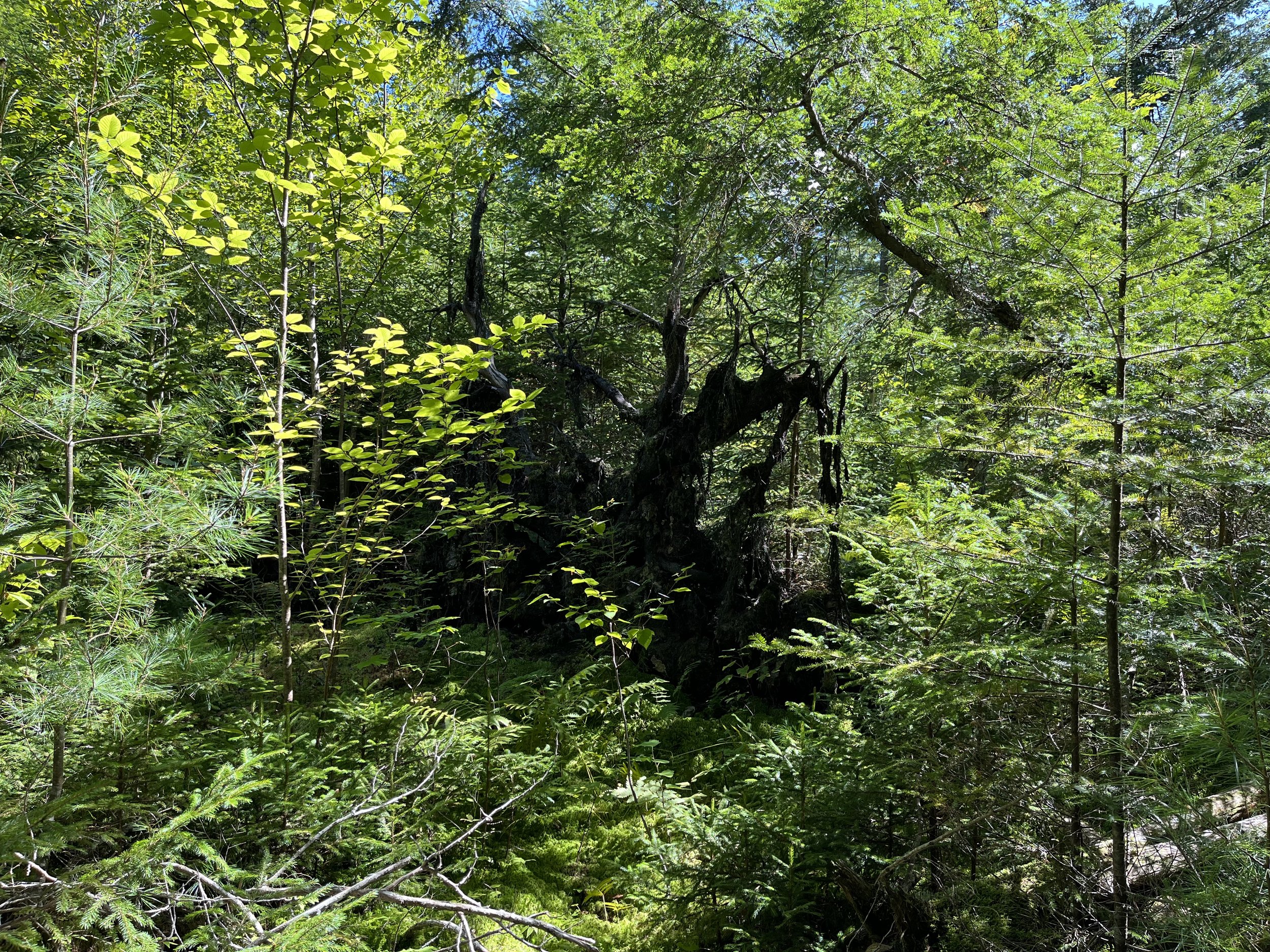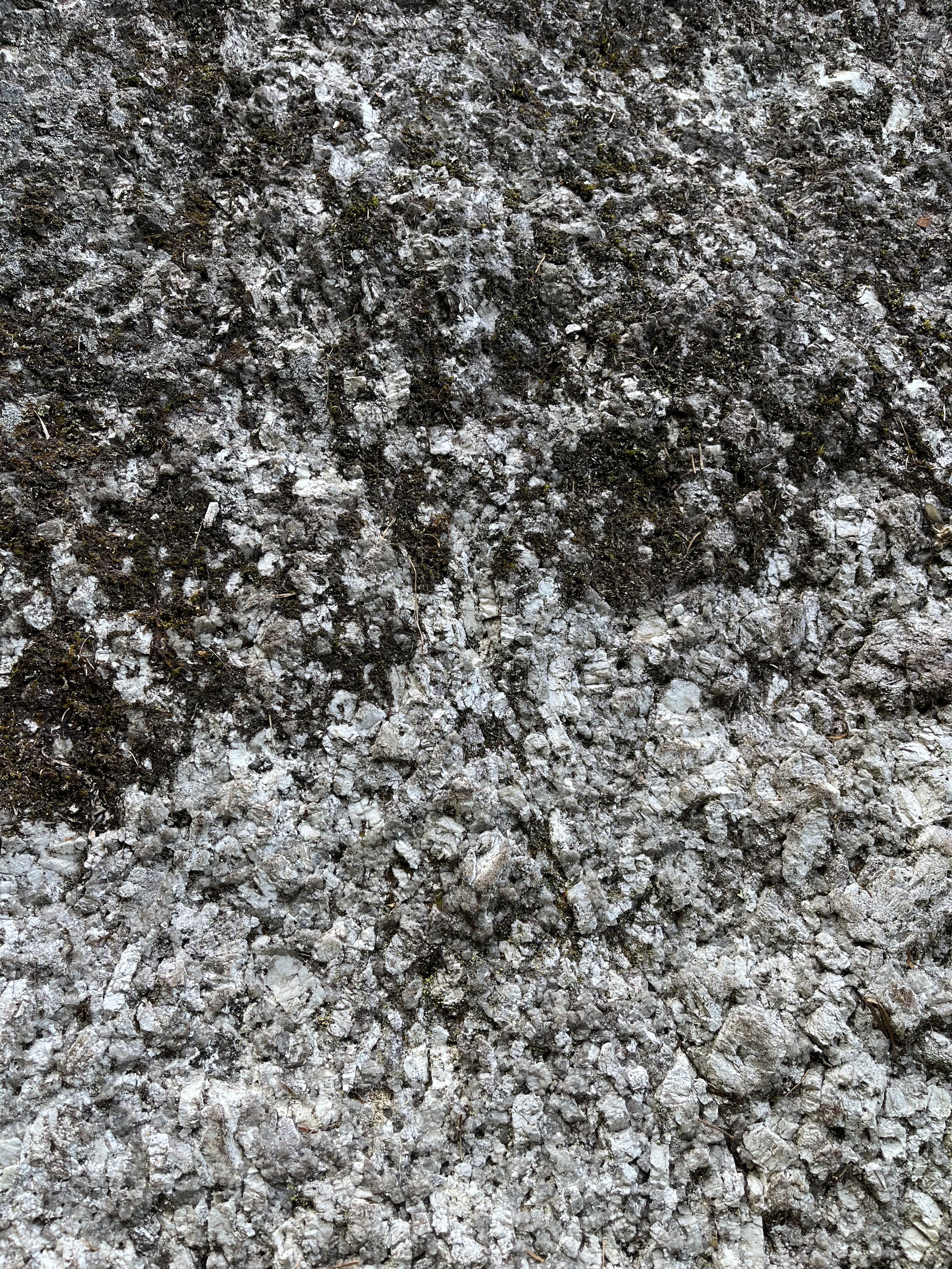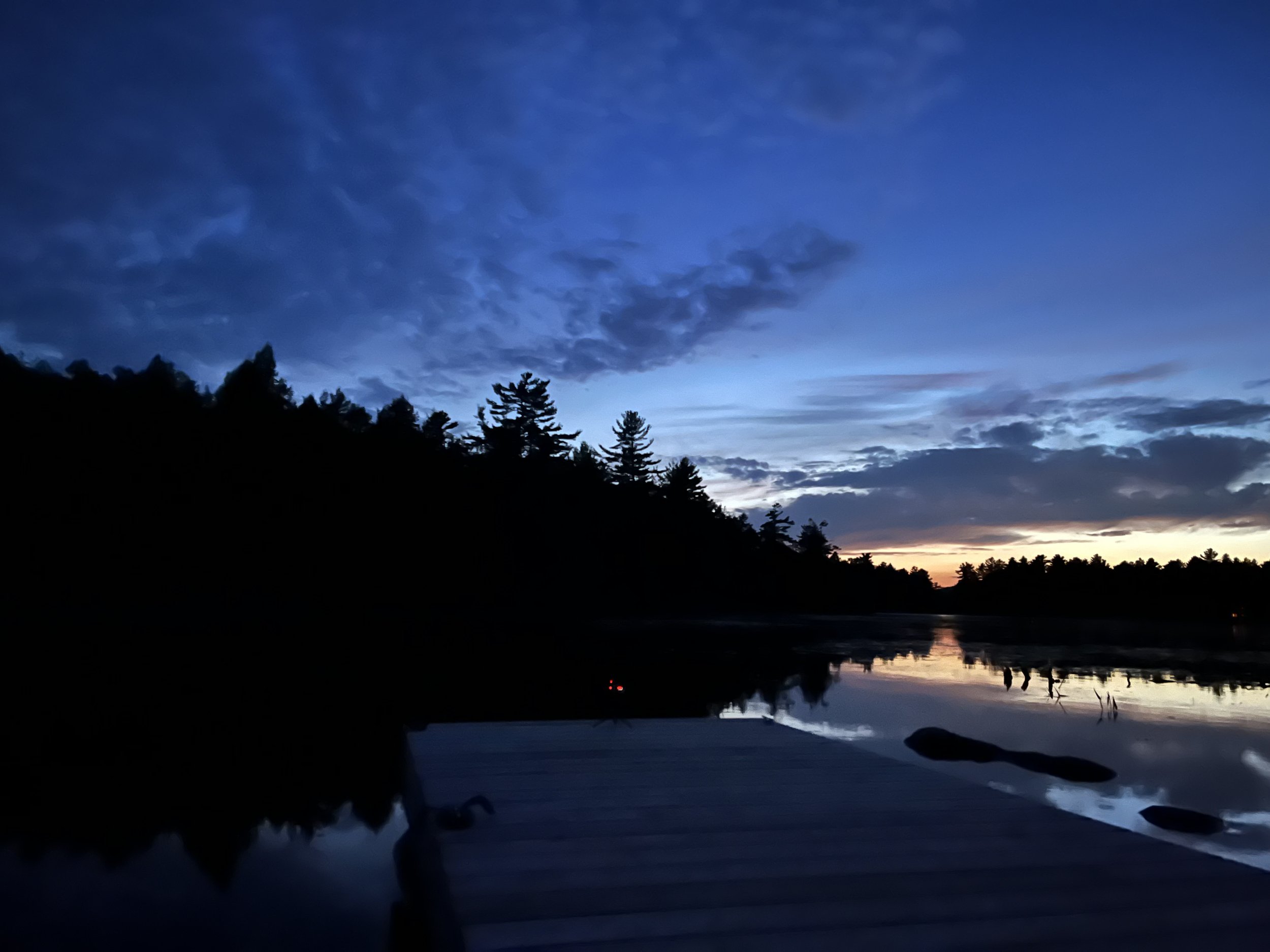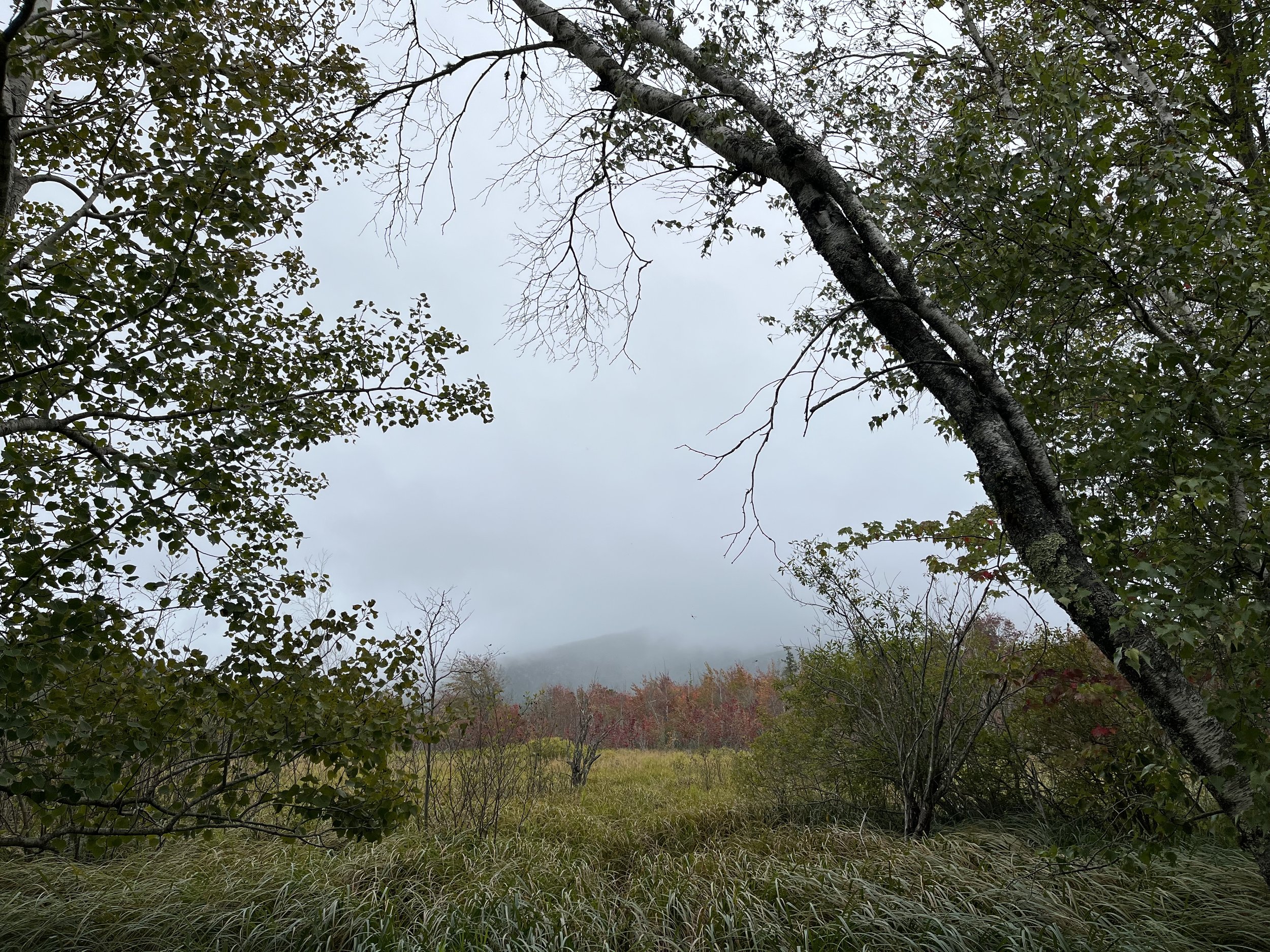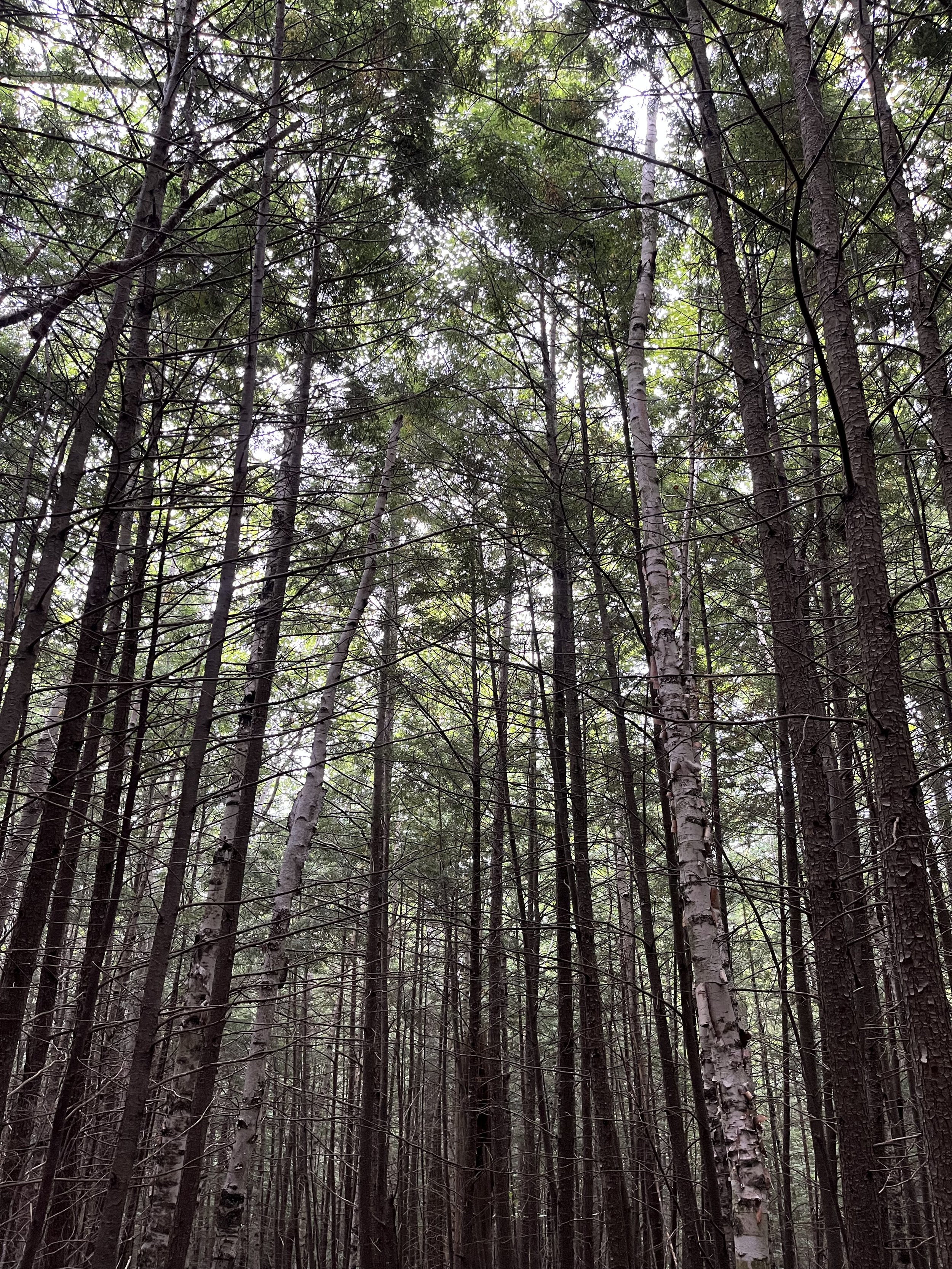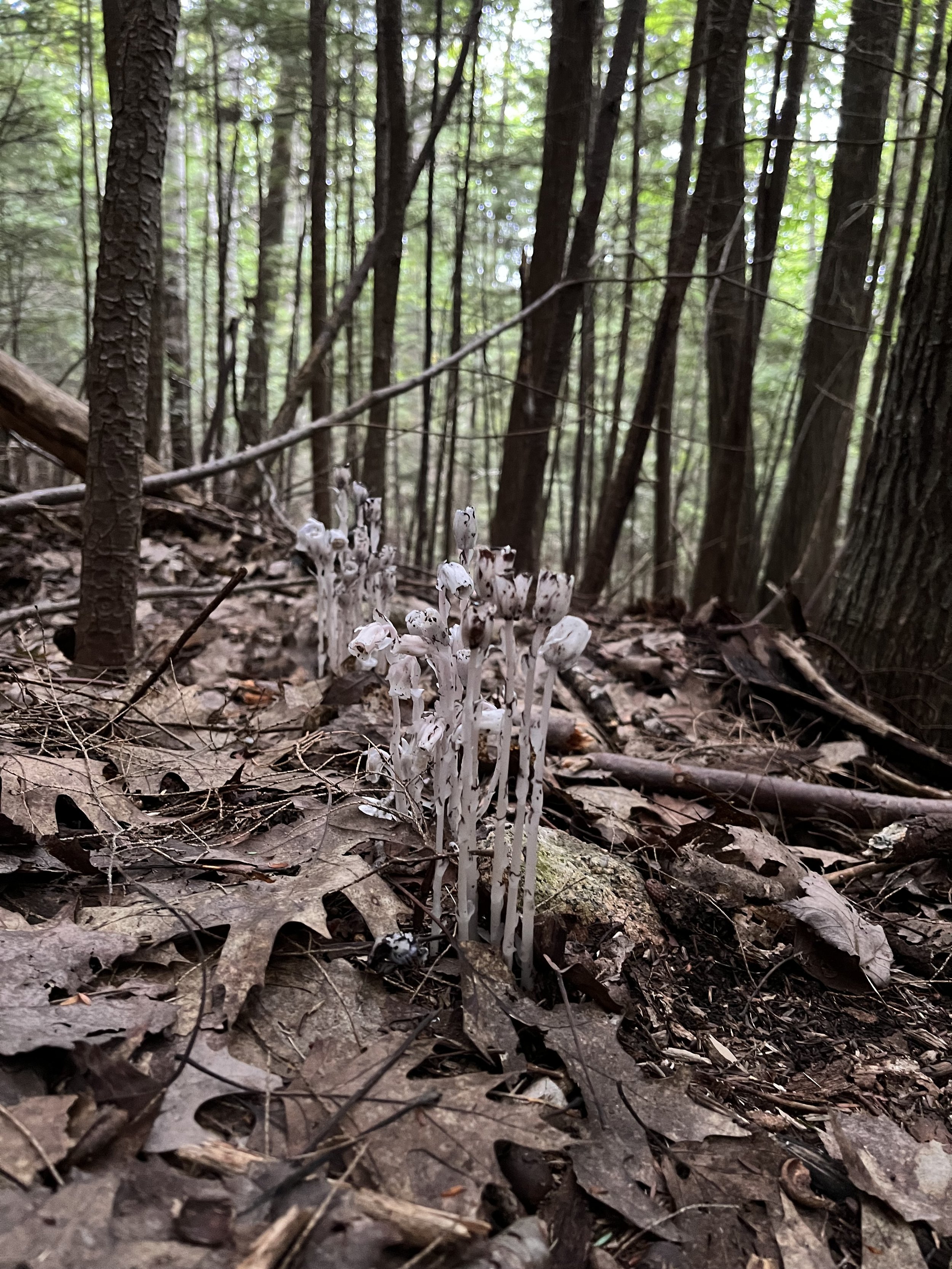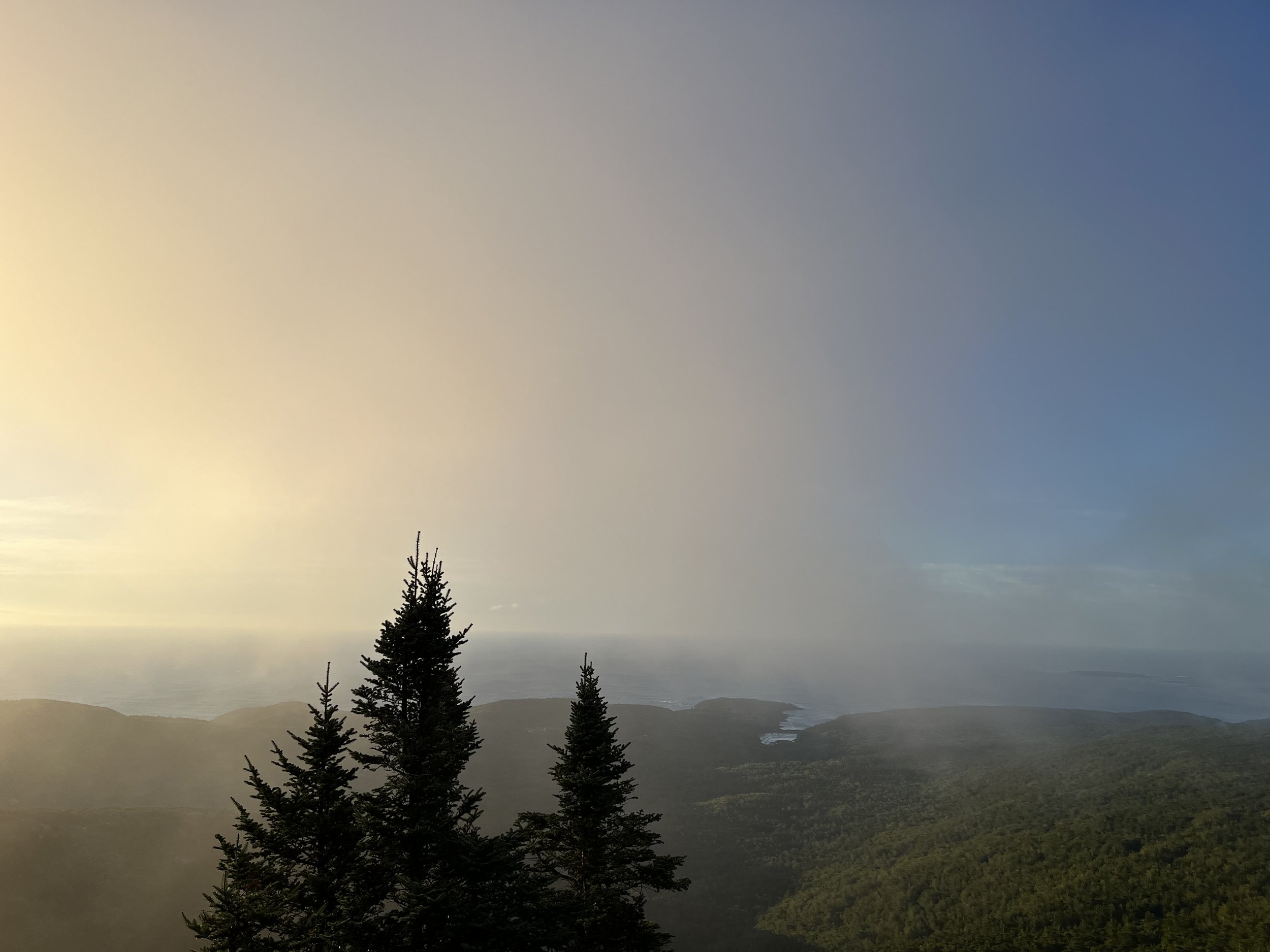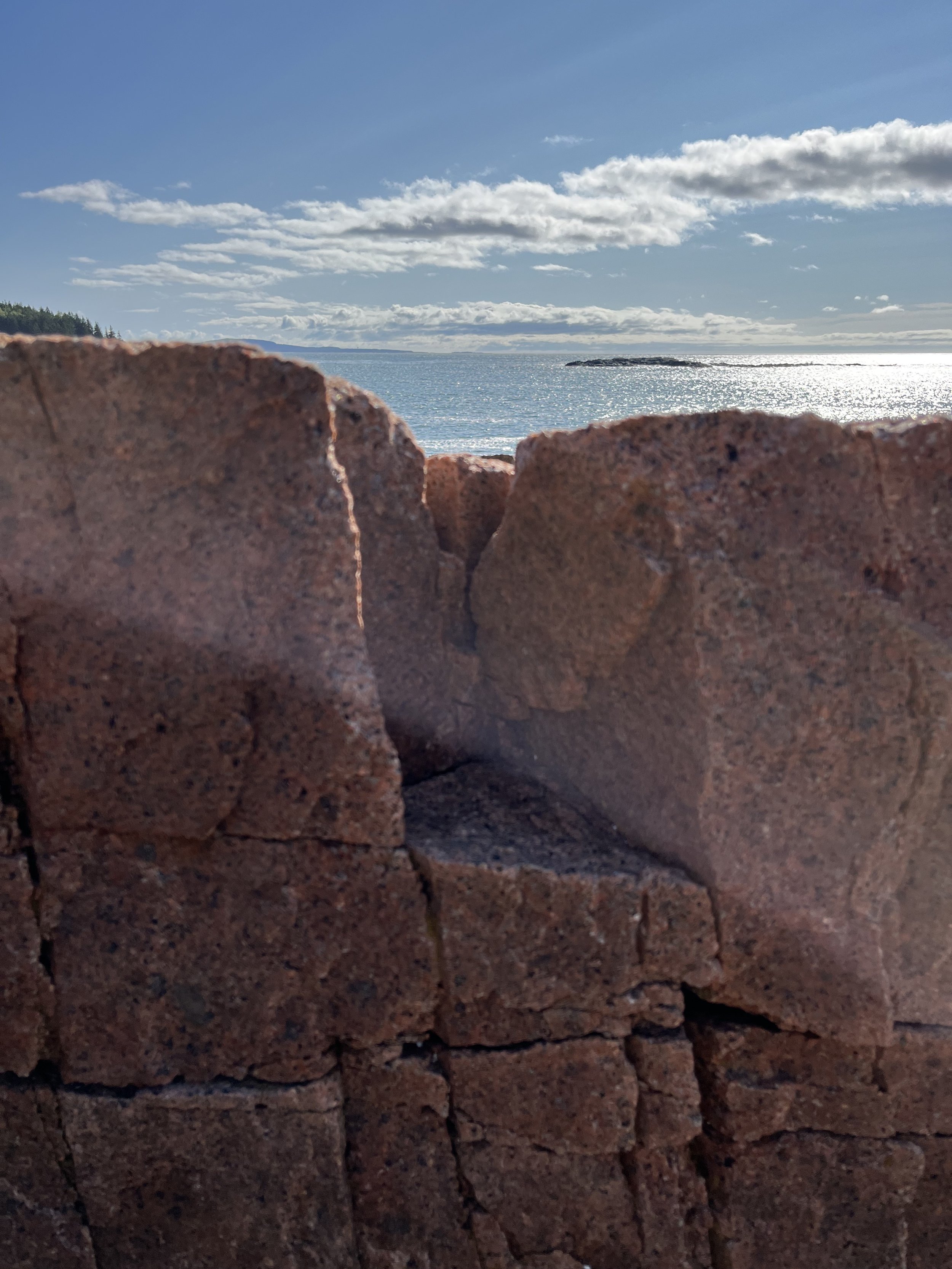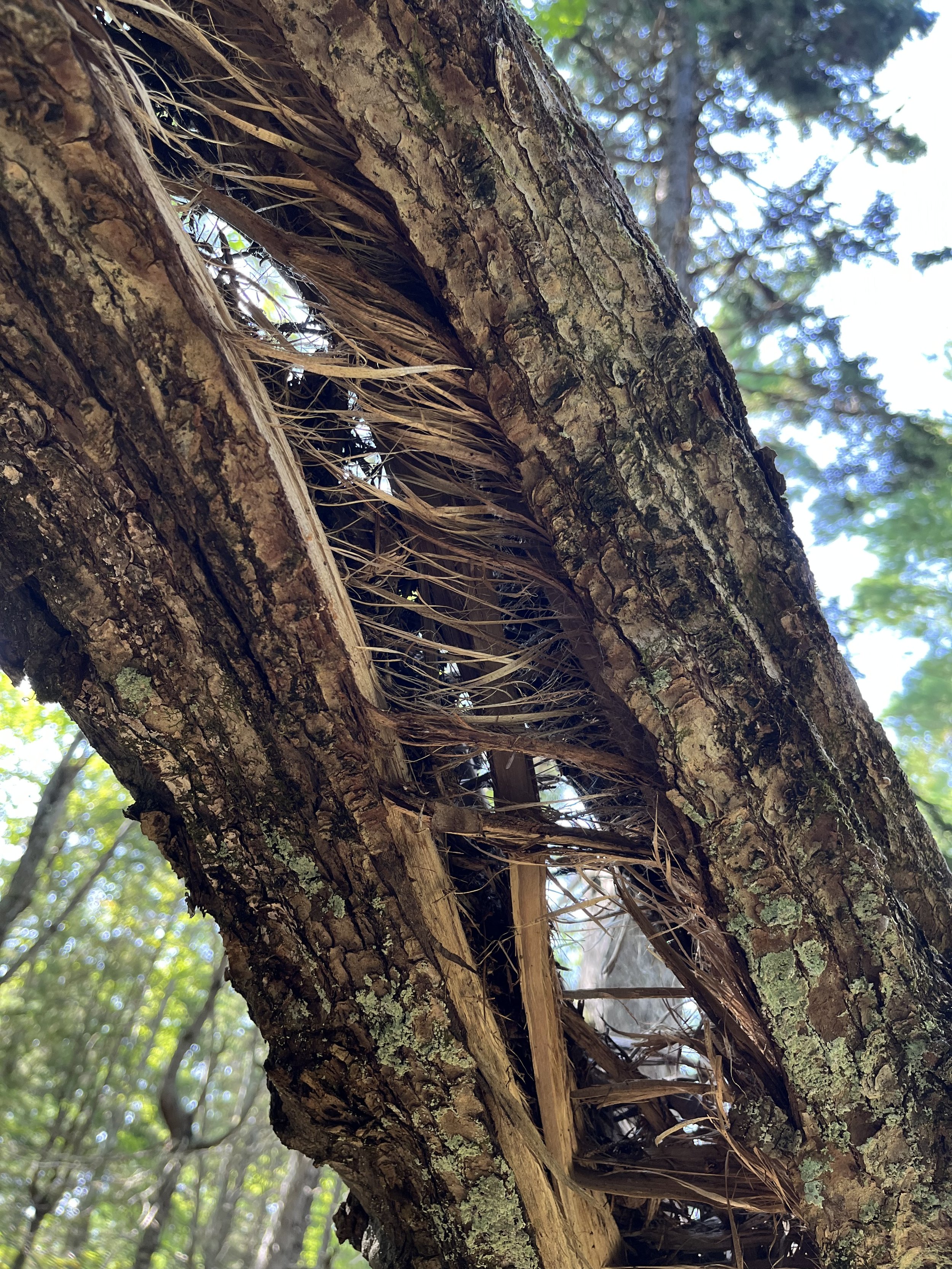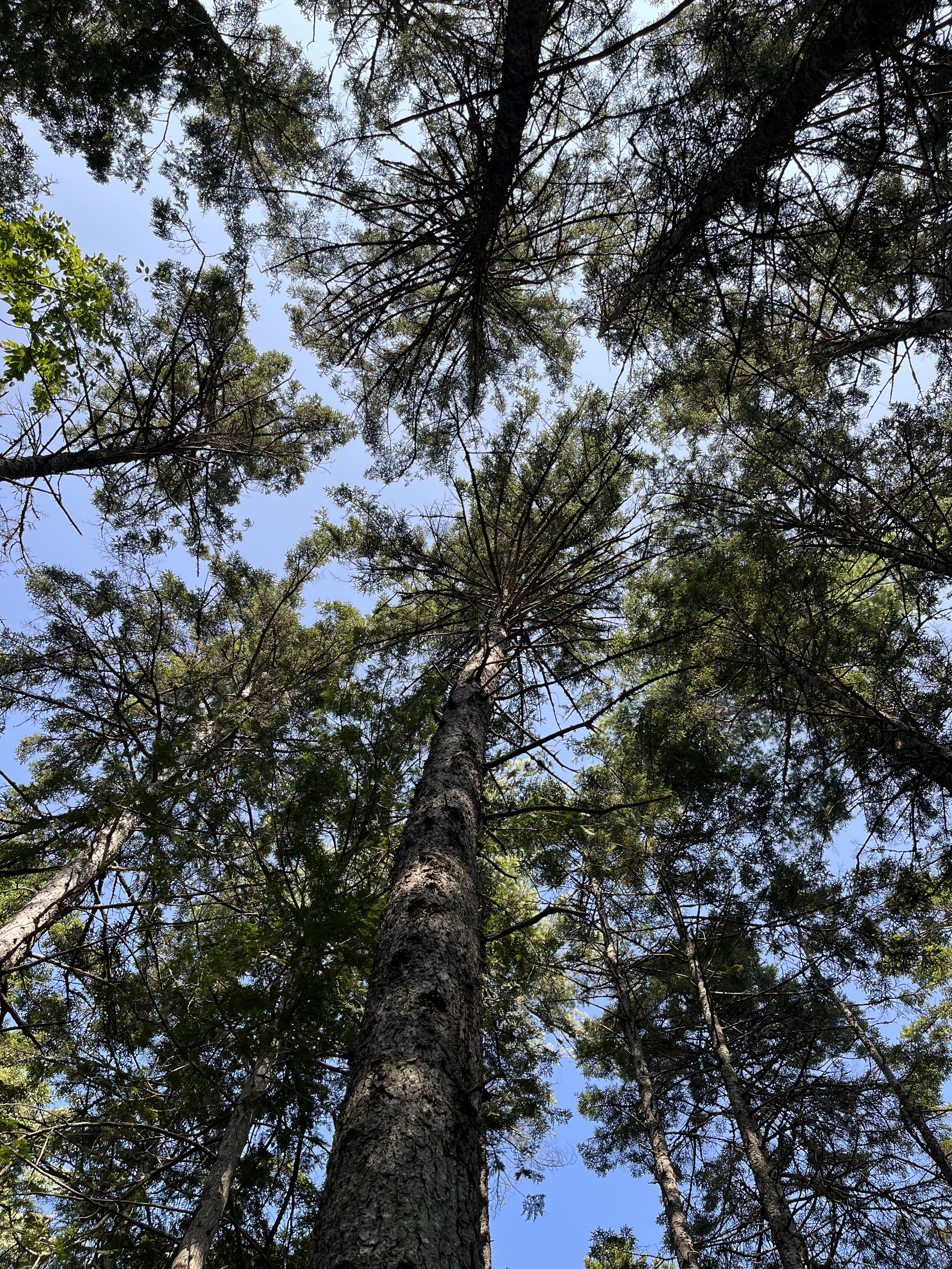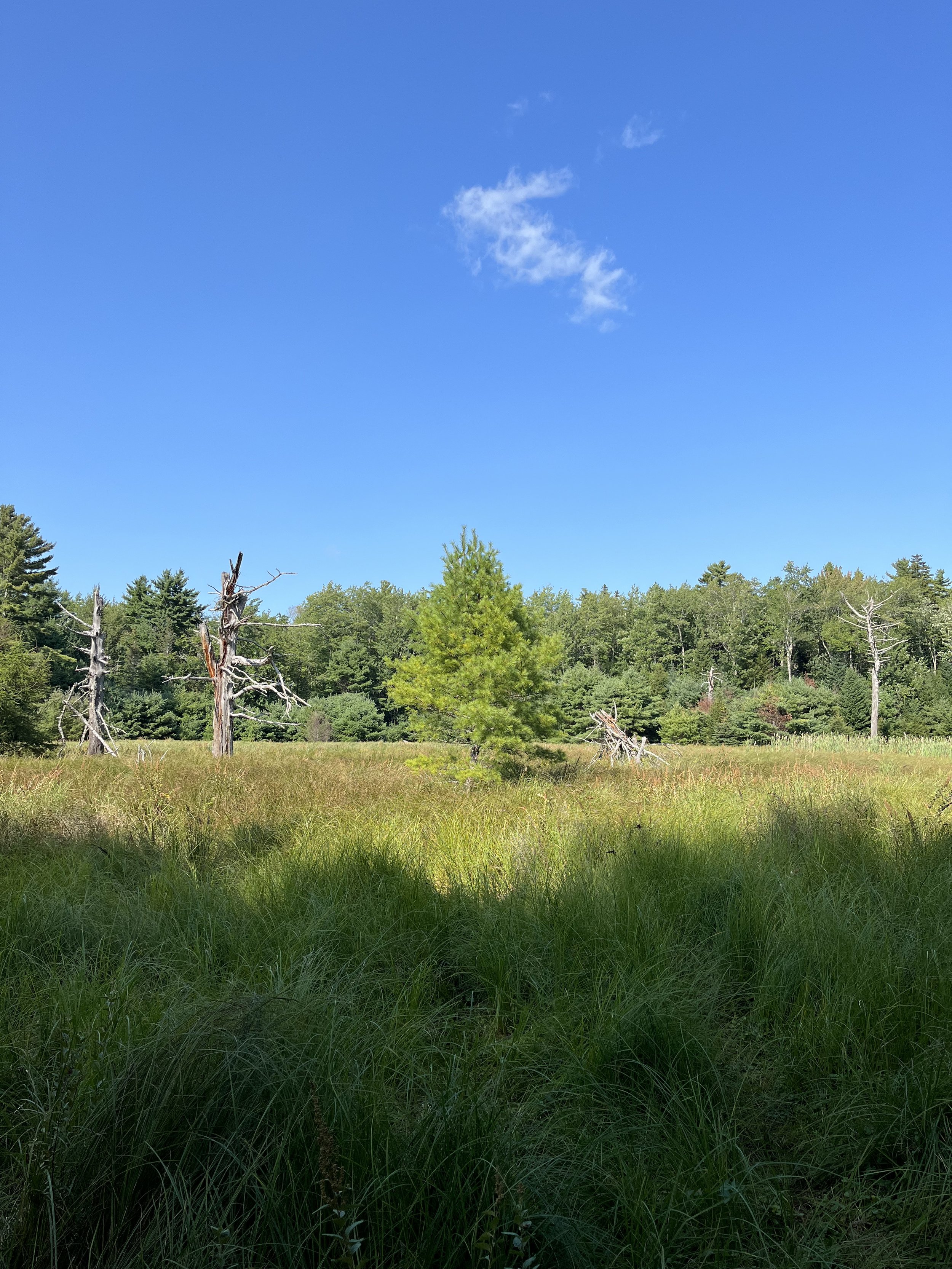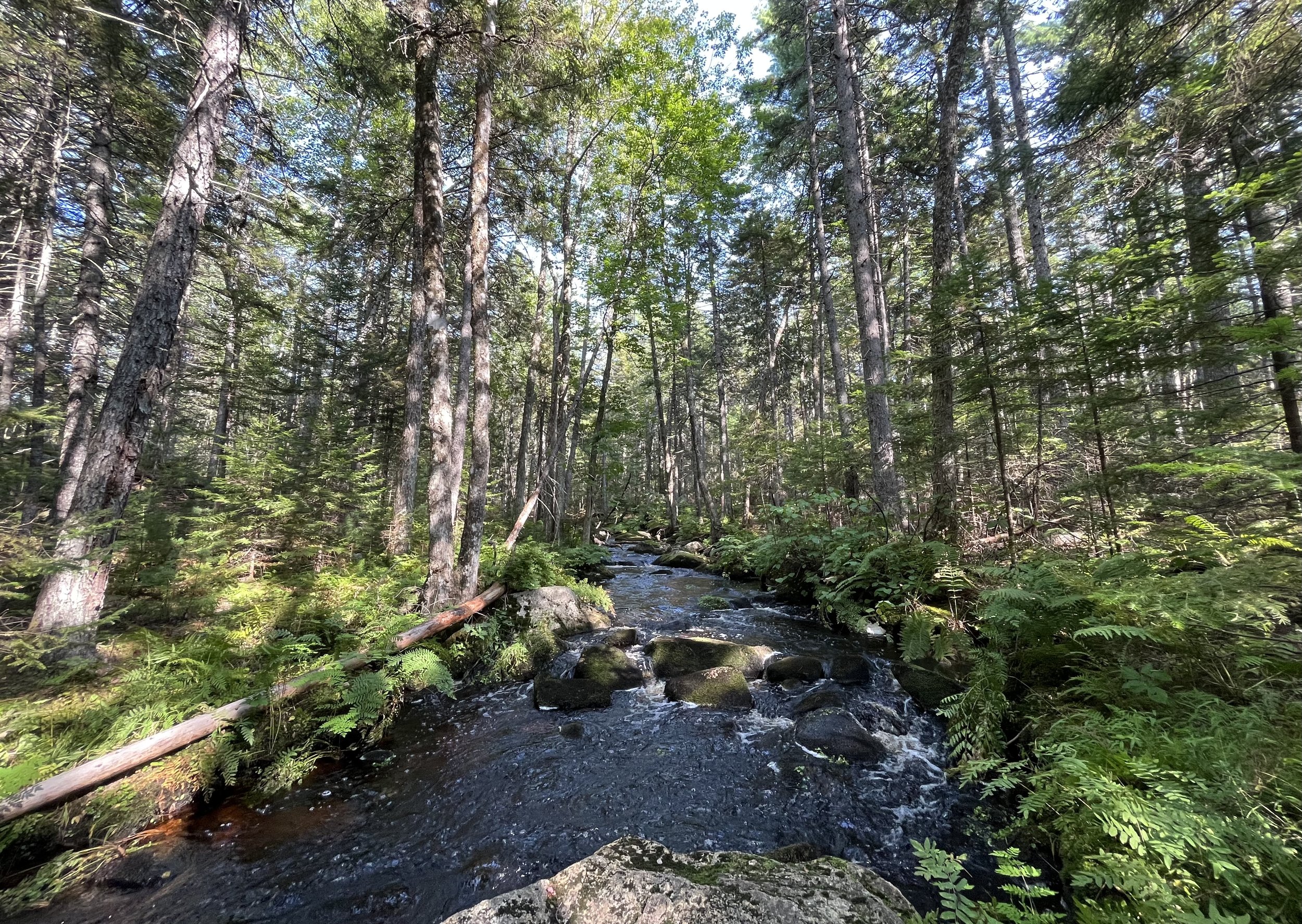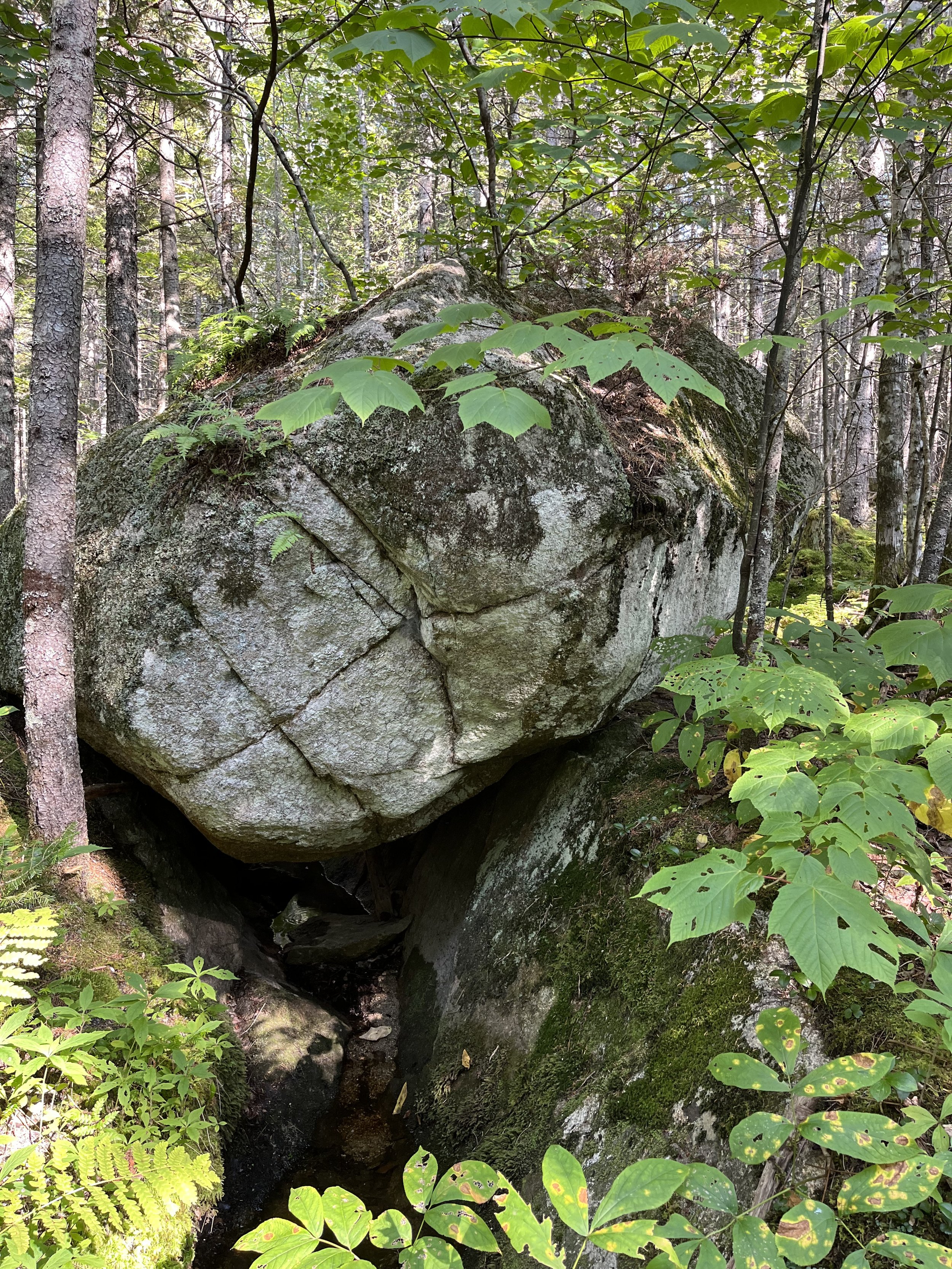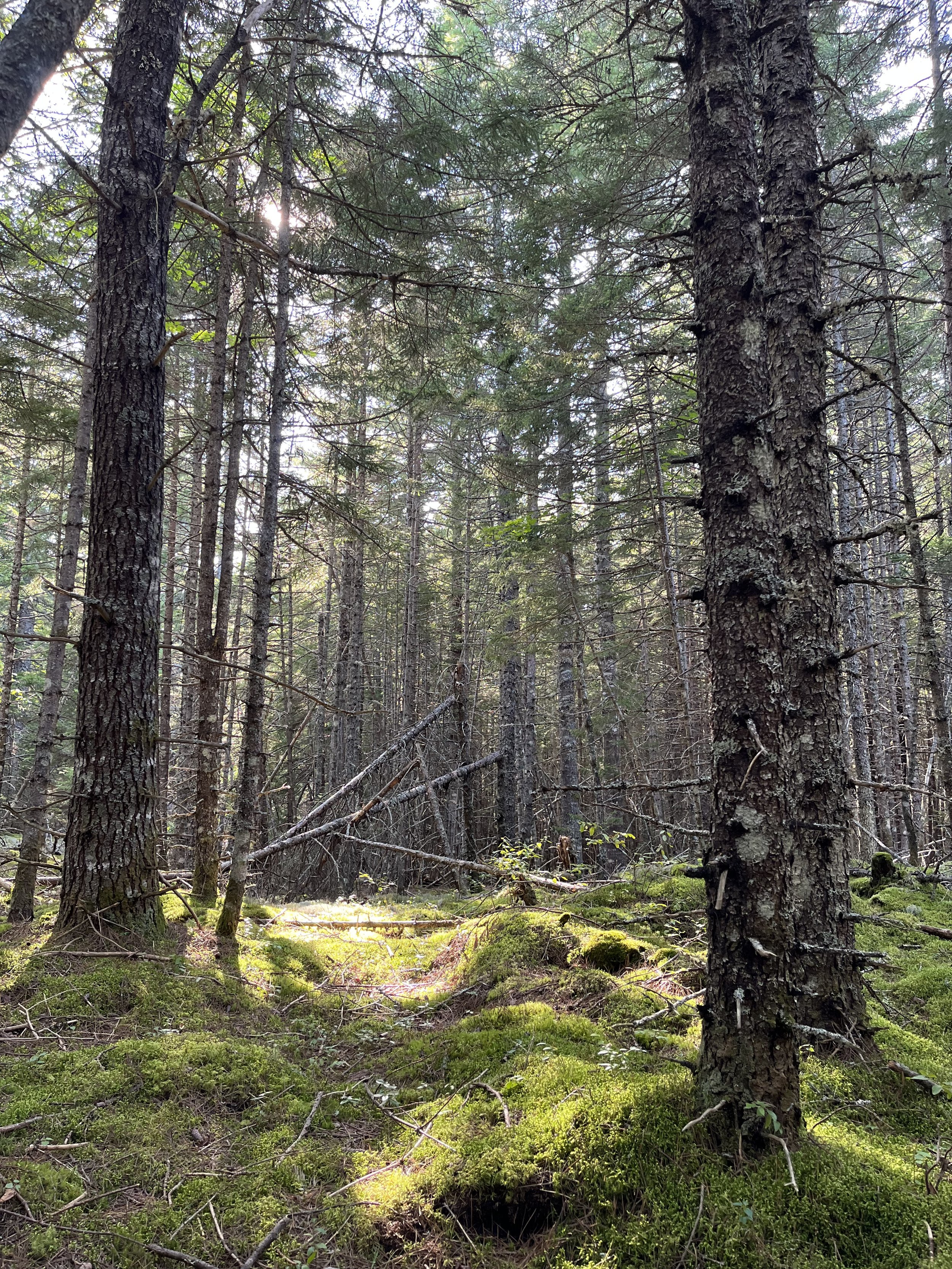My Composing Process: "fog hovering above still water" (2023)
Dear Readers.
My family recently got back from a week’s vacation in Maine. Such a beautiful state. I love the mossy woods, gorgeous lakes and the connection with nature. We were staying on Branch Lake, which is not far from the town of Ellsworth.
Inspired by the setting and sounds of Maine, I decided to compose a piece as an ode to the place.
Recording Maine Sounds
My Zoom H4N microphone on the dock overlooking the cove. I love recording soundscapes because they capture a specific moment in time. My soundscape library is a chronicle of my travels.
While in Maine, I recorded sounds with both my Zoom H4N microphone and my iPhone. The first few days at the cabin I scoped out possible areas that would provide nice soundscapes. One area was the dock that looked over a small cove on the lake. In the morning, a few birds would sing and American Red Squirrels would chat to each other. In the evening, the crickets and loons would arrive. I also liked the woods by the cabin. I placed the Zoom mic on top of a mound of moss and left it there for twenty minutes, recording the wind blowing through the pines and some crickets.
The loon calls were especially impressive. At night they would echo across the lake. I managed to record some of their tremolos on my phone.
I also recorded the American Red Squirrels close up. There were two always around the cabin, calling to each other, calling to us and just being really adorable. I was able to record their chattering by placing my microphone on a rock that they frequented. I knew this because they left the remnants of pine codes on the top of it.
And finally, I recorded the bird calls in the evening (possibly osprey, a red tailed hawk or maybe crows). Didn’t plan on recording them specifically, but they happened to call during a long form recording. That is the beauty of doing long form soundscape recording, because you never know what might happen during them. I especially love leaving the recorder by itself and discovering the sounds when listening back to the audio. This happened with the Red Squirrel recordings. I didn’t realize I got the close up chattering until I listened back to the audio.
I love recording water whenever possible. In Maine there is plentiful supply. Two water recordings appear in this piece. One was recorded in Penny’s Preserve in Blue Hill. There was a gorgeous waterfall in Peter’s Brook and I got a close-up recording of the roaring water on my phone. The second water track comes from Acadia National Park. One the Ocean Path, you are able to walk right down to the water along these rocky outcrops. One of these sections included a small natural trickle of water leading down to the ocean. I recorded this one with my phone.
Some Sounds I Recorded:
Composing The Melody
I had already composed this melody before I even went to Maine. I had started to read the book “How The West Was Sung: Music In The Westerns of John Ford” by Kathryn Kalinak. Through that book I was introduced to a number of folk songs that John Ford used in his films. Some of these include “The Rose of Tralee”, “The Streets of Laredo”, “Bury Me Not On The Lone Prairie” and “Red River Valley”. Inspired, I decided to try to write a folk melody of my own. I drew upon the use of repetitive melodies with slight variation, relatively simple chord progressions and also the sense of elongated time and musical lines.
I composed my own folk melody and notated it out on staff paper at the piano by hand":
For the final piece, I made some slight adjustments and elongated the ending a bit, but basically the entire melody and feeling is right here. The basic structure centers around a descending bass line (something that I love to do). You can see in the left hand that the bottom note travels downwards from C to Bb to Ab, and then ends with a I - V - I movement of G - D - G in the key of G. In the following measure the bass line once again moves from C to Bb but then goes down to A natural and then Ab. This allows for the chord of F major to sneak in before the chord of F minor.
The B section of the piece travels to F major and features an ascending bass line, traveling from F to F# to G#. Eventually it resolves back to the key of C, when the A section repeats once more.
Performing The Piece
Having returned from Maine, I downloaded all my various recordings and added them to my sound library collection. It was at this point that I placed some of the soundscapes into an empty Logic session with the goal of creating a new piece inspired by the sounds of Maine. While on the dock one evening during a gorgeous sunset, I filmed a 2 minute video with my phone. I decided to compose music for that video.
I remembered my folk melody. On a whim, I loaded up Spitfire LAB’S Soft Piano and performed the melody in one take. Instead of chords in the left hand, I opted for an eighth note motion, adding movement like ripples on the water. I took my time with certain measures (these became 6/4 measures when I notated it out) and utilized fermatas (long pauses). The performance felt organic, and I kept it.
I decided to notate out the whole piece after I performed it. You can view the score on this blog, feel free to try playing it for yourself!
Placing the Sounds
The full Logic session of “fog hovering over still water”
The Longform Woods Recording stretches across the entire piece, as does the Crickets at Night recording and Dock Early Morning. I placed the Loon Recordings (from my phone) at the beginning and end of the piece as bookends. The two water recordings arrive during the B section and then slowly fade out. The sound of the squirrels chattering only appears at the end of the B section, and the bird appear during the final repetition of the main theme (notice how they are sort of in the key and even in time with the notes, entirely by accident!). The crickets up close recording (done on my phone) arrive at the end of the piece to add some more cricket texture (what a phrase).
My goal with these sounds was to create an organic soundscape that doesn’t feel like a lot of different recordings layered together. Instead, I wanted it to feel like a complete sound world.
Adding to the soundscape are two synth drones (from Spitfire LAB’S Whalesong library). These are low frequency drones that begin and end the piece, subtle but they definitely add some nice weight.
The Title and the Album Cover
One early morning, I walked out onto the dock and noticed a thin layer of fog floating above the water. It was incredibly beautiful, and yet eerie at the same time. Everything was still and magical. I then wrote this poem:
“fog hovering above still water
in the early morning
a ghostly form
that disappears when the sun arrives”
I decided to use the first line as the title for this piece, partly due to the fact that the video is of the dock, but also because I think the phrase describes the magic of Maine succinctly.
I had a wealth of images to choose from for the album cover. I took tons of photos in Maine because I am just so inspired by the natural setting, the moss, the trees, the waterscapes, the fungai. I could go on and on. At the bottom of this blog there are a number of the photos that I took, feel free to peruse.
I decided to go with a photo that I took of the water in Blue Hill. While hiking in Penny’s Preserve. I noticed that in the water of Peter’s Brook there was an iridescent red color. I would guess that it could be minerals in the water reflecting the sunlight. Regardless it was beautiful and also somewhat haunting. Using the website Canva, I took this photograph and warped it utilizing the Liquify effect. The result is a psychedelic image that actually resembles marble.
Conclusions
I love this piece. I feel like it attempts captures the mystery and beauty of Maine. I felt creatively invigorated by Branch Lake. I loved the smell of the woods, sitting out on the porch at night and hiking through the woods on the property. I read a ton (Stephen King’s “The Shining”, the screenplay for “Shawshank Redemption” and poems William Carlos Williams). I wrote dozens of short poems. The hiking was brilliant. We saw the sunset at Cadillac mountain and the Blue Supermoon on the dock.
We have been to Maine three times before this, and I swear that I time I love the state even more. I look forward to returning again soon.
Your’s Musically,
Nicholas Escobar
Some Photos From Maine





